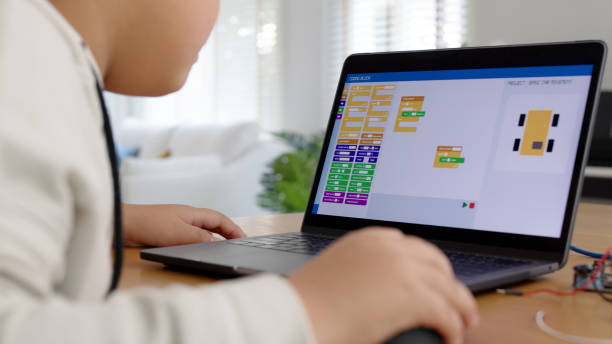1. Introduction: The Role of Mathematics in Gaming
Mathematics is the backbone of modern gaming. Every game, from simple puzzles to complex multiplayer universes, relies on mathematical principles. Without math, game worlds wouldn’t function logically, and gameplay would feel random and unstructured. Mathematics provides the structure and rules that create engaging, balanced experiences.
Game developers use mathematics in numerous ways—calculating physics, designing algorithms, generating graphics, and even shaping AI behavior. By applying math, developers ensure that every interaction, motion, and event within a game feels realistic and meaningful. This hidden layer of math is what brings virtual worlds to life.
Understanding the role of math in gaming can deepen our appreciation for the games we love. It also opens doors for aspiring developers and players curious about the technical side of gaming. This article will explore various aspects where math is essential in game creation and experience.
2. Geometry and Game Worlds
Geometry is vital in designing the 3D worlds players explore. It helps define the shapes, sizes, and spatial relationships of objects in the game environment. Developers use geometric concepts to create models of characters, buildings, and landscapes that feel natural and immersive.
Coordinate systems, vectors, and transformations are all geometric tools that enable movement and interaction within these spaces. For example, when a character moves or an object rotates, geometry determines the exact positions and orientations. Collision detection, essential for gameplay realism, also relies heavily on geometric calculations.
Without geometry, games would lack depth and perspective. The stunning visuals and smooth animations players enjoy all stem from complex geometric principles that translate code into vibrant, navigable worlds.
3. Algebra in Game Mechanics
Algebra forms the foundation for many game mechanics and systems. Whether it’s calculating damage in combat, scoring points, or managing resource allocation, algebraic equations help balance gameplay. Developers create formulas that define how variables like health, speed, and strength interact.
These formulas ensure that games are challenging yet fair. For example, an algebraic equation might determine how much damage a weapon inflicts based on the player’s level and weapon stats. This allows for scaling difficulty and keeps players engaged as they progress.
Algebra also helps with game economy design, enabling developers to model complex systems like currency exchange or item crafting. This mathematical rigor keeps the in-game world consistent and logical.
4. Probability and Randomness
Many games use probability to introduce elements of chance and unpredictability. Random number generators (RNGs) determine outcomes like loot drops, critical hits, or enemy behavior. Probability theory ensures these random events feel fair and balanced over time.
By understanding probability, developers can control how often rare items appear or how frequently certain events occur. This keeps gameplay exciting without frustrating players. For example, a 5% chance of finding a rare item makes it special but not impossible.
Probability also influences AI decision-making, making enemy behavior less predictable and more engaging. Randomness powered by math adds a dynamic layer to gaming, enhancing replayability.
5. Calculus in Physics Engines
Calculus is fundamental for simulating real-world physics in games. It allows developers to calculate rates of change, such as velocity and acceleration, which govern how objects move and interact. Physics engines use calculus to make movements smooth and realistic.
For instance, when a player jumps or a ball rolls, calculus helps compute the trajectory and impact forces. This creates immersive experiences where the virtual environment behaves according to physical laws players intuitively understand.
Calculus also helps in optimizing these simulations, ensuring that games run efficiently without sacrificing realism. Physics-driven gameplay is one of the most impressive uses of math in gaming.
6. Trigonometry and Rotations
Trigonometry plays a key role in handling rotations and angles within games. Whether it’s the direction a character faces or the trajectory of a projectile, trigonometric functions calculate positions based on angles and distances.
Game developers use sine, cosine, and tangent functions to simulate everything from camera movement to projectile arcs. This math helps ensure smooth transitions and natural motions, enhancing immersion.
Trigonometry is especially important in 3D games where players interact with complex environments. It allows accurate representation of spatial relationships and movement.
7. Linear Algebra and Graphics
Linear algebra is the powerhouse behind 3D graphics rendering. It deals with vectors and matrices that transform models within a game world. This math enables scaling, rotating, and translating objects to produce realistic animations.
Graphics pipelines use linear algebra to convert 3D models into 2D images displayed on screens. Without this, creating visually appealing and dynamic scenes would be impossible.
Game engines rely on linear algebra for lighting, shading, and texture mapping, which bring visual detail and depth to game environments. Mastering linear algebra is essential for anyone interested in graphics programming.
8. Algorithms and AI Behavior
Algorithms guide the behavior of non-player characters (NPCs) and artificial intelligence (AI) in games. These sets of mathematical instructions determine how AI reacts to player actions, navigates environments, or makes decisions.
Pathfinding algorithms like A* use math to find the shortest or safest route in a game map. Decision trees and probabilistic models help AI choose actions based on context, making gameplay challenging and dynamic.
The complexity and realism of AI behavior owe much to mathematical foundations that allow computers to mimic intelligent actions, enhancing player immersion.
9. Game Balancing and Math
Balancing a game involves carefully tuning mathematical parameters to ensure fairness and fun. Developers analyze player statistics and tweak variables like damage, speed, or cooldown times to maintain challenge without frustration.
Mathematical modeling helps predict how changes affect gameplay, preventing overpowered strategies or unbeatable enemies. This iterative process requires data analysis and testing informed by math.
Balancing ensures a satisfying experience for diverse players and keeps games competitive and engaging over time.
10. The Future: Math in Game Innovation
As gaming technology advances, mathematics will remain crucial in driving innovation. Emerging fields like procedural generation use math to create expansive, unique worlds without manual design.
Machine learning and AI advancements rely on complex math to make games smarter and more responsive. Virtual and augmented reality also depend on precise calculations for immersive environments.
Mathematics will continue to shape the future of gaming, making experiences richer and more exciting for players worldwide.
Conclusion
Mathematics is the invisible thread weaving together every aspect of gaming, from the simplest puzzles to sprawling open worlds. It forms the foundation for graphics, physics, AI, and game mechanics, ensuring that virtual experiences feel real, engaging, and balanced. For players, understanding this relationship adds a new layer of appreciation, while for developers, math is the tool that transforms imagination into reality.
As technology evolves, the partnership between math and gaming will only grow stronger, opening endless possibilities for creativity and innovation. Whether you’re a gamer, designer, or curious learner, the mathematical world behind games offers fascinating insights and endless opportunities.
Also Read About: digitalnewsalerts




